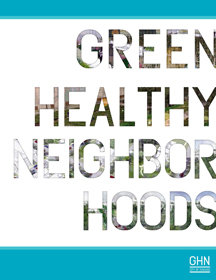Green Healthy Neighborhoods
|
Green Healthy Neighborhoods (GHN) is a 10- to 20-year planning strategy to maximize the use of vacant land and other neighborhood resources within Chicago’s Englewood, West Englewood, Washington Park and Woodlawn community areas as well as parts of the New City, Fuller Park and Greater Grand Crossing community areas. As a neighborhood stabilization plan, GHN seeks to mitigate factors that have fostered the decline of a 13-square-mile area that, for much of the city’s early history, was represented by economic growth and prosperity but, in more recent decades, has been characterized by disinvestment and population loss. In 2010, the area’s population of 148,000 people was less than 40 percent of its all-time high in 1940. Simultaneous to the population loss, many of the region’s dense residential buildings and vibrant commercial structures were vacated and replaced with 11,000 vacant lots, equivalent to more than 800 acres of vacant land. Chief among the GHN stabilization strategies are efforts to support urban agriculture, active and passive recreation, new industrial activity, housing preservation, and a variety of cultural resources within the GHN planning area. Download chapters and subjects below. Introduction, History, Housing Retail, Productive Landscapes, Manufacturing Open Space, Infrastructure, Historic Preservation
|
|

|
